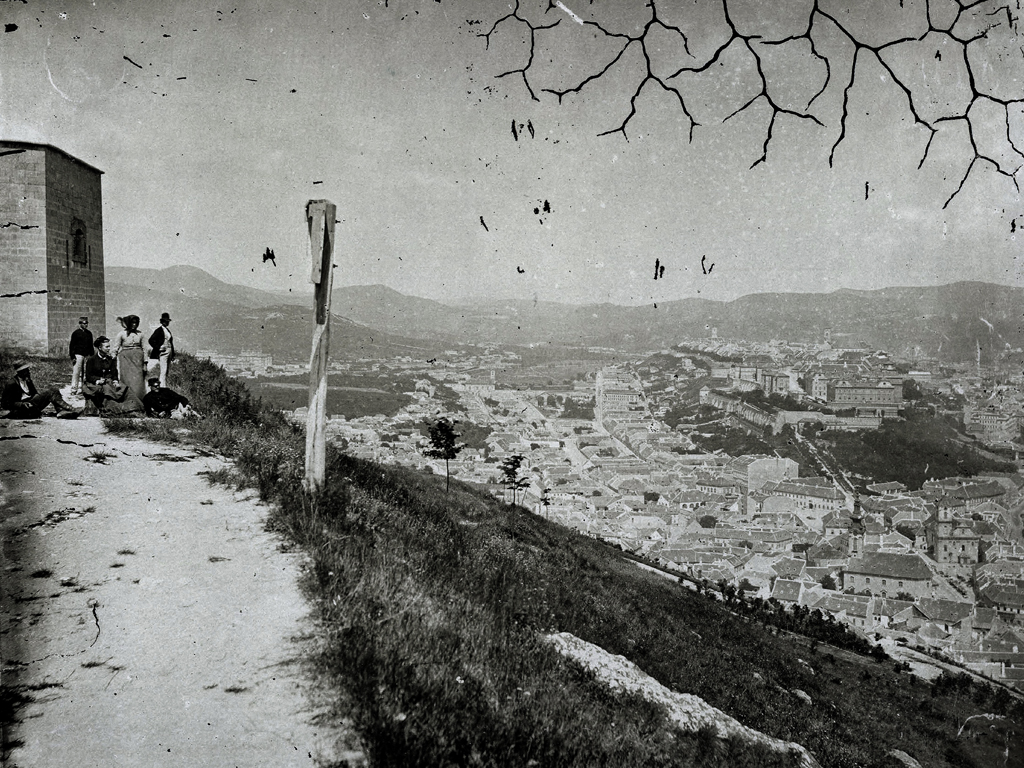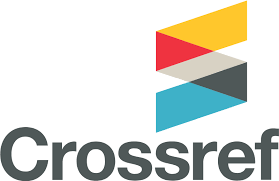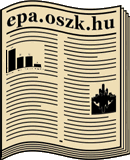Visual Representations of the Modern Metropolis. Interconnections of Literature and Fine Art Photography
DOI:
https://doi.org/10.15170/PAAA.2022.09.01.02Keywords:
metropolis, flâneur, History of PhotographyAbstract
The visual approach of the Hungarian metropolis begins with the dimensions of the European metropolis. The city is the first large-scale theme in modern culture, inspiring an endless line of images, the place of worship of European modernism, the place where things happen: the place we arrive by mail or train. The flâneur, who walks around the city, takes on the role of a screenwriter and director, including a photographer, who turns fragments of other people’s lives into a story of their choice. The locations of texts and images, the forecourts, the passages, the streets, according to the items of modern urban architecture discourse, are merely ‘empty spaces’, a places which they are given a meaning arising from the cultural and regional contexts. These areas will start to function as spaces of theatricality, the street will be a public part of the city, where groups belonging to different cultural backgrounds and traditions will meet. The characters of the artist looking for a model appear more and more often among the characteristics of the artists. The protagonist, who look at the sights offered by the street, who will become more and more photographers in addition to the poet, writer, journalist, painter and sculptor documenting modernity.
Photo: Fortepan/ Budapest City Archives. Archival reference: HU.BFL.XV.19.d.1.05.153
Downloads
References
Ágai Adolf (Porzó): Utazás Pestről Budapestre: 1843–1907. Budapest, 1908.
Atget, Eugène: Photographs from the J. Paul Getty Museum. Los Angeles, 2000.
Bach Melitta – Lackó Mihály: Leskelődők. Budapest, 1990.
Balzac, Honoré de: Elveszett illúziók. I. In: Balzac, Honoré de: Elveszett illúziók; A kalandor, I–II. Budapest, 1965.
Bentham, Jeremy: Panopticon; or the Inspection-House. Dublin, 1791.
Berecz Ágnes: Festők, mítoszok, Párizs: Művészeti élet a 19. század második felének Párizsában. Budapesti Negyed 9. (2001):2–3. 21–32. (https://epa.oszk.hu/00000/00003/00025/berecz.html) [2021.08.20.]
Bíró Lajos: A sajtó. Budapest, 1911.
Dickens, Charles: Reggeli utcák. In: Dickens, Charles: London aranykora és más karcolatok. Budapest, 2012. 24–31.
Habermas, Jürgen: A társadalmi nyilvánosság szerkezetváltozása: Vizsgálódások a polgári társadalom egy kategóriájával kapcsolatban. Budapest, 1993.
Habermas, Jürgen: Válságtendenciák a kései kapitalizmusban. In: Habermas, Jürgen: Válogatott tanulmányok. Szerk. Felkai Gábor. Budapest, 1994. 59–139.
Hansági Ágnes: Tárca – Regény – Nyilvánosság: Jókai Mór és a magyar tárcaregény kezdetei. Budapest, 2014.
Hugo, Victor: A nyomorultak. II. Budapest, 1967.
Karcher, Eva: Otto Dix: 1891–1969. Köln, 1992.
Kiss József (Szentesi Rudolf): Budapesti rejtelmek. Budapest, 2007.
Kiss Noémi: Fényképezés, szöveg, archiválás: Klösz György fotográfiái. Alföld 55. (2004):5. 75–91.
Kiss, Noémi: Zum Verhältnis von Fotografie, Text und Archivierung um 1900 – György Klösz. In: Leitha und Lethe: Symbolische Räume und Zeiten in der Kultur Österreich–Ungarns. Hrsg. Kerekes, Amália – Millner, Alexandra – Plener, Peter. Tübingen, 2004. 91–110. (Kultur – Herrschaft – Differenz 6.)
Kiss Noémi: Fényképezés, szöveg, archiválás: Klösz György fotográfiái. In: Kiss Noémi: Fekete-fehér: Tanulmányok a fotográfia és az irodalom kapcsolatáról. Miskolc, 2011. 11–36.
Klösz György: Budapest, anno…: Fényképfölvételek műteremben és házon kívül. Budapest, 1996.
Kolta Magdolna: Képmutogatók: A fotográfiai látás kultúrtörténete. Budapest, 2003.
Kolta Magdolna – Tőry Klára: A fotográfia története. Budapest, 2007.
Kónya Judit: Nagy Lajos, Arcok és vallomások. Budapest, 1980.
Kovács János: Sue hatása a magyar regényirodalomra. Kolozsvár, 1911.
Kovács Ilona: Sue és az irodalmi siker rejtelmei (kísérő tanulmány). In: Sue, Eugène: Párizs rejtelmei: A regény idézett kiadásának magyar fordítása a „Tolnai regénytára” sorozatban 1922-ben, fordító megjelölése nélkül készült szöveg újraközlése. Budapest, 2002. 715–733.
Kovács Krisztina: Táj- és térképzetek Hunyady Sándor prózájában. Doktori disszertáció. Szeged, 2013. (http://doktori.bibl.u-szeged.hu/id/eprint/1962/19/ertekezes_Kovacs_Krisztina_2013.pdf) [2021.08.20.]
Le Sage, Alain-René: A sánta ördög. Budapest, 1956.
Lengyel András: A modernitás kibontakozása és törései: A magyar kultúra mélyszerkezetének átalakulása a 20. század első felében. In: Lengyel András: Képzelet, írás, hatalom: Irodalom- és művelődéstörténeti tanulmányok. Szeged, 2010. 61–115.
Lénárt Tamás: Fény-írás és a rögzített pillanat: Irodalom és fotográfia kollíziói a XX. század magyar kultúrtörténetében. Doktori disszertáció. Budapest, 2011. (http://doktori.btk.elte.hu/lit/lenarttamas/diss.pdf) [2021.08.20.]
Lénárt Tamás: Rögzítés és önkioldás: Fotográfiai effektusok és fényképészek az irodalomban. Budapest, 2013.
Moholy-Nagy, László: Dynamic of the Metropolis: Sketch of a Manuscript for a Film. h. n., 1921–1922. (https://monoskop.org/images/6/64/Moholy-Nagy_Laszlo_1925_1969_Dynamic_of_the_Metropolis.pdf) [2021.08.20.]
Morgan, Emily Kathryn: ”True Types of the London Poor”: Adolphe Smith and John Thomson’s Street Life in London. Dissertation. Arizona, 2012. (https://repository.arizona.edu/handle/10150/255192) [2021.08.20.]
Nagy Ignác: Magyar titkok. Első füzet. Pest, 1844.
Nagy Ignác: Magyar titkok. Tizenkettedik füzet. Pest, 1844.
Parkinson, Gavin: From Gas to Electric: Georges Seurat, Brassaï and the City of Light. In: Electric Worlds/Mondes èlectriques: Creations, Circulations, Tensions, Transitions (19th–21st C.). Ed. Beltran, Alain – Laborie, Lèonard – Lanthier, Pierre – Le Gallic, Stèphanie. Londob, 2016. 39–64. (https://www.jstor.org/stable/j.ctv9hj6hk.5?refreqid=excelsior%3Ae442b590c37f74f39e57add060c9a31a&seq=1#metadata_info_tab_contents) [2021.08.20.]
Poe, Edgar Allan: A tömeg embere. In: Edgar Allan Poe összes művei. I., Szeged, 2001. 294–300.
Riesman, David: A magányos tömeg. Szerk. Kemény István. Budapest, 1973.
Stetler, Pepper: ”The New Visual Literature”: László Moholy-Nagy’s Painting, Photography, Film. Grey Room 32. (2008):Summer. 88–113. (https://doarch492bauhaus2015.files.wordpress.com/2015/01/lc3a1szlc3b3-moholy-nagys-painting-photography-film.pdf) [2021.08.20.] ǁ [DOI] https://doi.org/10.1162/grey.2008.1.32.88
Sue, Eugène: Párizs rejtelmei: A regény idézett kiadásának magyar fordítása a „Tolnai regénytára” sorozatban 1922-ben, fordító megjelölése nélkül készült szöveg újraközlése. Budapest, 2002.
Szilágyi Gábor: A fotóművészet története: A fényrajztól a holográfiáig. Budapest,1982.
Szomory Dezső: A párizsi regény. Budapest, 1997.
Thackeray, William Makepeace: An Invasion of France. In: Thackeray, William Makepeace: The Paris Sketch Book of Mr. M. A. Titmarsh and Eastern Sketches, a Journey from Cornhill to Cairo, the Irish Sketchbook and Character Sketches. Boston, 1882. 5–15.
Thomson, Belinda: Impresszionizmus: Gyökerek, megvalósulás, fogadtatás. Szerk. Kézdy Beatrix. Budapest, 2006.
Tóth Benedek: A város képe és szerepe a bécsi tárcaírás diskurzusában a 19. század második felében. In: A véleménysajtótól a tömegsajtóig: Fejezetek a magyar újságírás történetéből. Szerk. Klestenitz Tibor – Paál Vince. Budapest, 2017. 59–77.
Zola, Émile: Párizs gyomra. Budapest, 1893.
Zola, Émile: A hajsza. Budapest, 1984.
Zola, Émile: Rougonék szerencséje. Budapest, 1984.

Downloads
Published
How to Cite
Issue
Section
License

This work is licensed under a Creative Commons Attribution-NonCommercial-NoDerivatives 4.0 International License.










